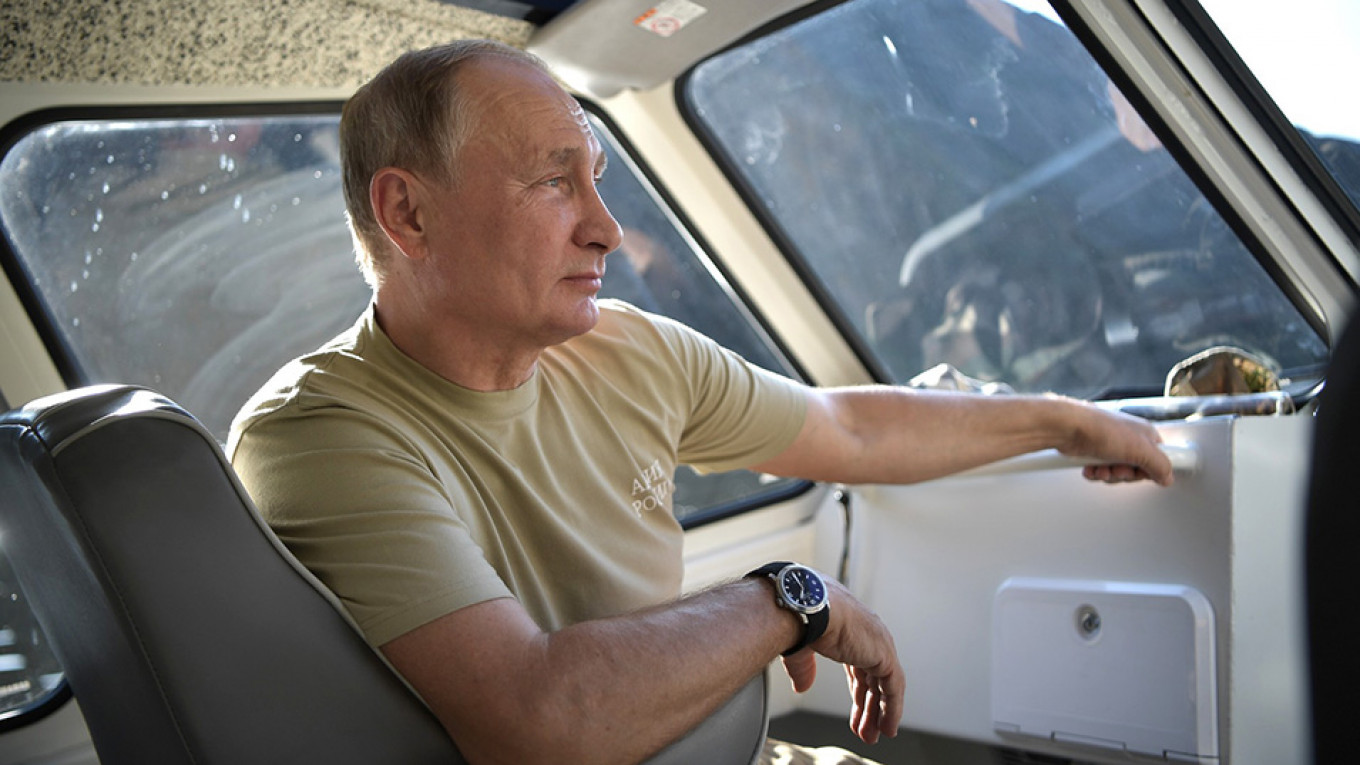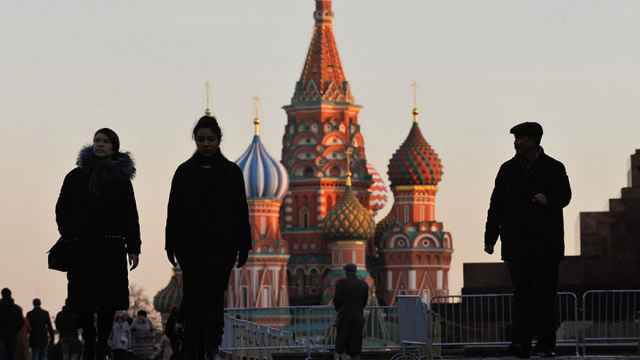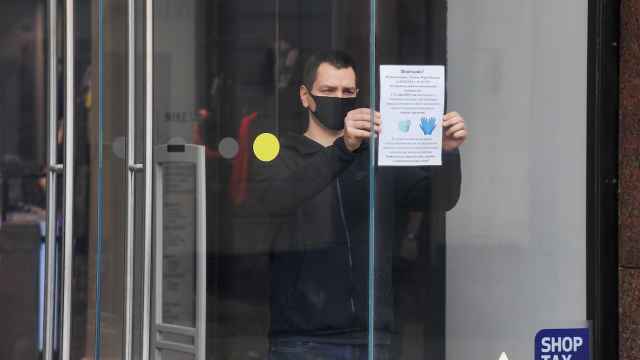As President Vladimir Putin attempts to pivot from foreign adventures to domestic affairs, his government has adopted a development plan for Russia’s vast territory. The idea is to direct the country’s population and economic activity to a limited number of urban areas linked by new transportation projects.
The rest of the country would be treated as a social liability with some high-speed transport corridors and a number of regions that are important for “geostrategic” purposes.
Putin promised in his latest state of the nation speech to focus on revamping Russia’s infrastructure, which still hasn’t recovered from Soviet mismanagement and the economic collapse that followed the end of communism.
“It’s of enormous importance for binding our country together, and it’s especially important for us, the country with the biggest territory in the world,” he said in his February address as a prelude to laying out his plans for new high-speed highways, refurbished airports, the development of the Russian Far East and the creation of major research centers in provincial cities.
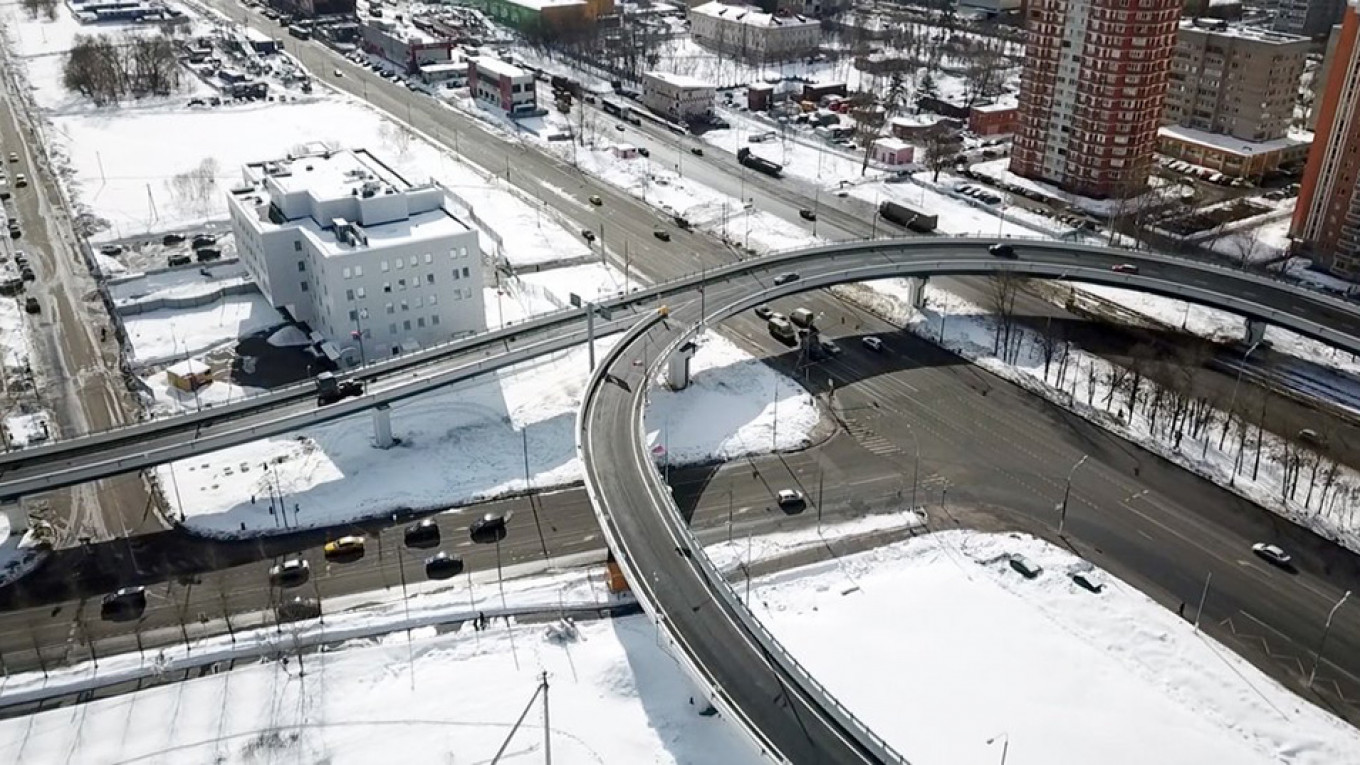
Putin’s proposals echo those of his long-time economic adviser Alexei Kudrin, a former finance minister and now head of the budget watchdog, who has pushed for prioritizing the development of a limited number of urban areas as growth locomotives.
He sees these places as counterweights to the increasing centralization of power and resources in the two biggest cities, Moscow and St. Petersburg.
According to Kudrin, the two urban centers, known in Russia as the two capitals, produce a combined 32 percent of the country’s economic output, compared with 25 percent 15 years ago. If the government doesn’t try to create competition for them, their share will go up to 40 percent by 2035, he predicts.
So last month, the Russian government approved a “Spatial Development Strategy Until 2025.”
The 115-page document names the “prospective economic growth centers” that should ensure growth of about 4 percent by 2025. Of these, 20, including Moscow and St. Petersburg, but also other large cities, such as Nizhny Novgorod, Yekaterinburg, Novosibirsk and Vladivostok, are meant to deliver 1 percentage point of GDP, and 19 cities, almost all from this list, are designated as possible future “world class education and science centers.”
These are the priority development areas; 44 other urban areas should add between 0.2 and 1 percentage points to growth, and yet another 0.4 percentage point should come from a number of areas with large mineral and agricultural resources.
The potential growth powerhouses will get the bulk of the government’s attention as it pursues a 6.3 trillion ruble ($96 billion), six-year infrastructure plan adopted in September that complements the regional development strategy. One of the key ideas is to increase the share of traffic between these cities that doesn’t go through Moscow to 51 percent from the current 37 percent and to create high-speed links between them. More than a quarter of the funds in the infrastructure program is earmarked for this.
The rest of the growth is essentially left up to regional governments, and the document subtly makes clear that the central government isn’t too concerned with all of those other places — except the four priority “geostrategic” areas: The annexed Crimean peninsula, the explosive North Caucasus, the Far East and the Arctic.
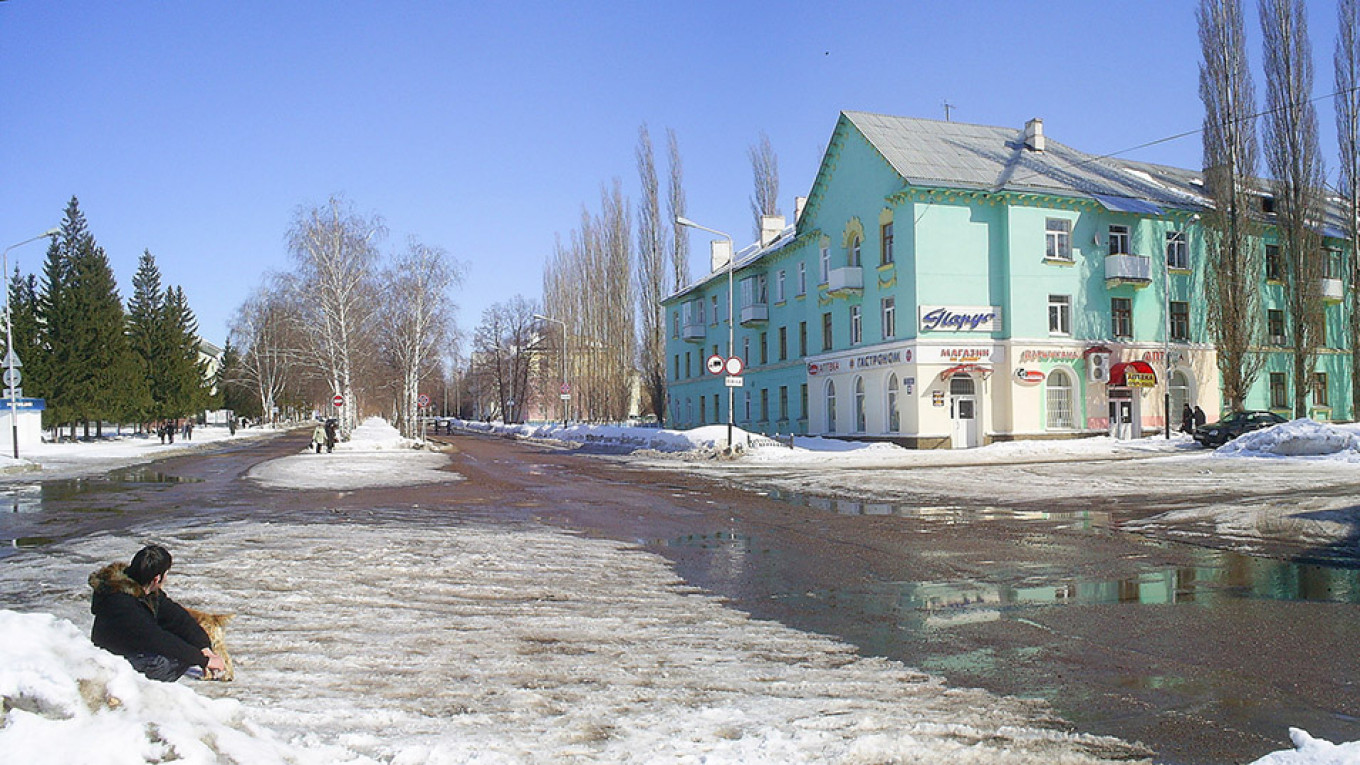
These areas are to be heavily subsidized to create easy and inexpensive transport connections to the rest of Russia and lift the living standards to 70 percent of the national average from the current 64 percent.
For the rest of Russian territory, the government is largely concerned with the speed of cargo transit on north-south and east-west routes (between Europe and India and between Europe and China). In the September plan, the government specified necessary speed increases for various modes of transport; the idea is to cut the freight transportation time between Russia’s Western border and China to seven days from 10 days or more today.
The bulk of the planned infrastructure spending is aimed at getting rid of transit bottlenecks and moving cargoes faster, so that by 2025 the Russian transportation network can move 30 percent more export goods.
As always, I hesitate to take such Russian government plans seriously. Infrastructure improvements traditionally have taken a back seat to other priorities, such as security and defense. In recent years, infrastructure spending has declined; it fell to about 550 billion rubles in 2017, 24 percent less than the 2014 level. Another important factor will be how much of the money gets stolen.
But $96 billion is a major investment. Change will be noticeable even if much of the outlay is wasted, as long as the government has the will to push ahead with the plan, almost doubling the 2017 spending level.
The government’s plan is logical on a certain level. Russia isn’t wealthy enough or governable enough for the central government to spread its resources even thinner. Moscow needs to focus on a limited number of areas and tasks. With that kind of triage,the smaller and economically weaker regions or towns have fewer chances to rise.
One could even argue that the government’s list of important regions is too long. But only 73 million Russians, about half the country’s population, live in the 40 biggest urban areas; the unstated message of the plan is that they should move where growth is expected and where government efforts will be concentrated.
If the government tries hard enough, fewer people from the hinterlands will be moving to Moscow, whose share of the Russian population has swelled to 8.5 percent last year from 6.9 percent in 2011, according to woefully incomplete official data. But in any case, areas that aren’t important for the government’s growth plans, transport corridors or geopolitics will suffer increasing neglect.
As a kid, I used to spend summer holidays in a small village in central Russia where my grandmother was born.
Even 40 years ago, the area was dotted with abandoned villages, the houses sinking into the ground, windows boarded up. Gradually, the Grim Reaper is coming for the once-bustling little towns where people had moved from the villages. In a country with too much space and too few people, much of the territory is doomed to be a huge flyover zone.
A Message from The Moscow Times:
Dear readers,
We are facing unprecedented challenges. Russia's Prosecutor General's Office has designated The Moscow Times as an "undesirable" organization, criminalizing our work and putting our staff at risk of prosecution. This follows our earlier unjust labeling as a "foreign agent."
These actions are direct attempts to silence independent journalism in Russia. The authorities claim our work "discredits the decisions of the Russian leadership." We see things differently: we strive to provide accurate, unbiased reporting on Russia.
We, the journalists of The Moscow Times, refuse to be silenced. But to continue our work, we need your help.
Your support, no matter how small, makes a world of difference. If you can, please support us monthly starting from just $2. It's quick to set up, and every contribution makes a significant impact.
By supporting The Moscow Times, you're defending open, independent journalism in the face of repression. Thank you for standing with us.
Remind me later.



